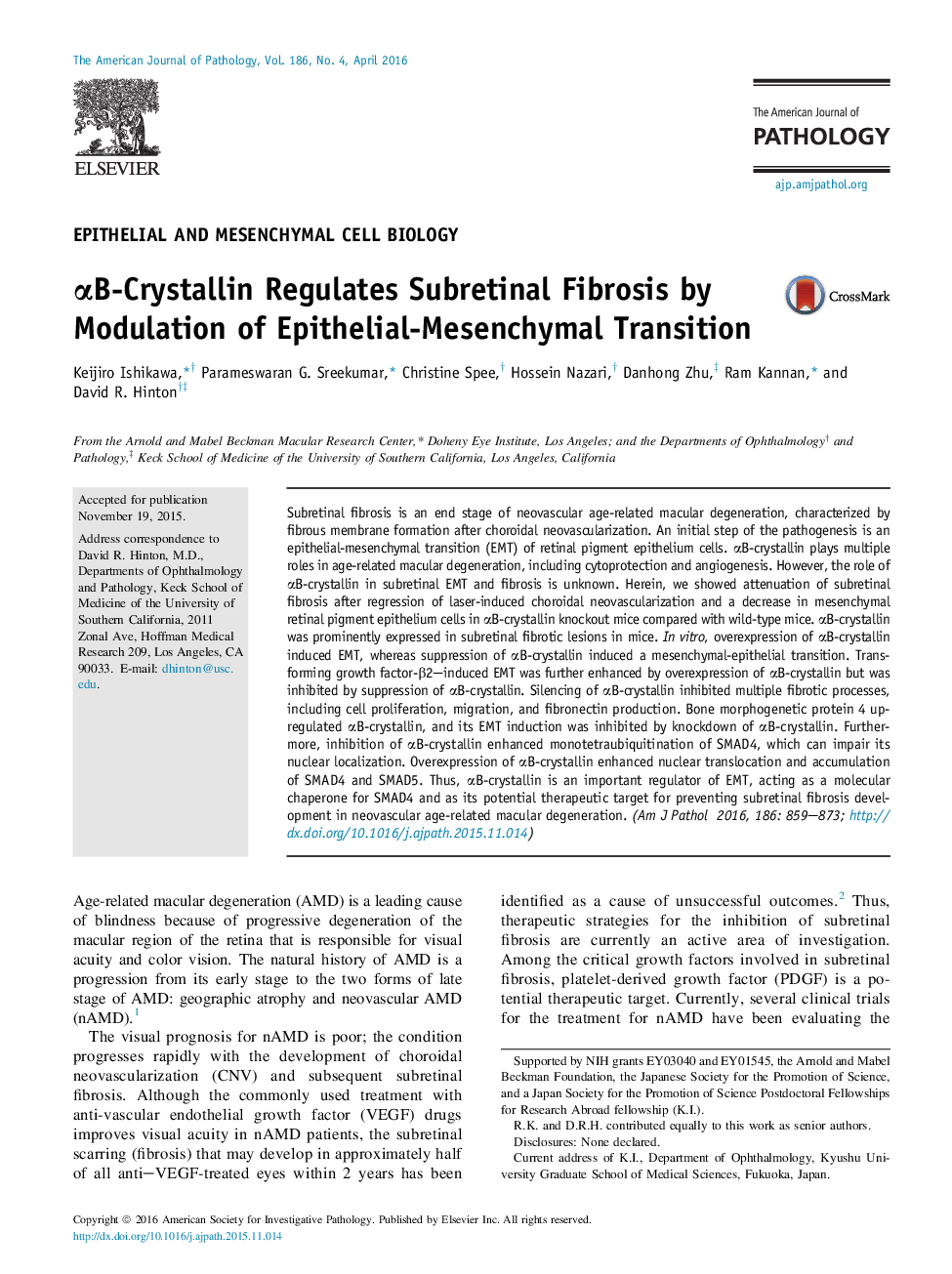| کد مقاله | کد نشریه | سال انتشار | مقاله انگلیسی | نسخه تمام متن |
|---|---|---|---|---|
| 2865738 | 1573369 | 2016 | 15 صفحه PDF | دانلود رایگان |

Subretinal fibrosis is an end stage of neovascular age-related macular degeneration, characterized by fibrous membrane formation after choroidal neovascularization. An initial step of the pathogenesis is an epithelial-mesenchymal transition (EMT) of retinal pigment epithelium cells. αB-crystallin plays multiple roles in age-related macular degeneration, including cytoprotection and angiogenesis. However, the role of αB-crystallin in subretinal EMT and fibrosis is unknown. Herein, we showed attenuation of subretinal fibrosis after regression of laser-induced choroidal neovascularization and a decrease in mesenchymal retinal pigment epithelium cells in αB-crystallin knockout mice compared with wild-type mice. αB-crystallin was prominently expressed in subretinal fibrotic lesions in mice. In vitro, overexpression of αB-crystallin induced EMT, whereas suppression of αB-crystallin induced a mesenchymal-epithelial transition. Transforming growth factor-β2–induced EMT was further enhanced by overexpression of αB-crystallin but was inhibited by suppression of αB-crystallin. Silencing of αB-crystallin inhibited multiple fibrotic processes, including cell proliferation, migration, and fibronectin production. Bone morphogenetic protein 4 up-regulated αB-crystallin, and its EMT induction was inhibited by knockdown of αB-crystallin. Furthermore, inhibition of αB-crystallin enhanced monotetraubiquitination of SMAD4, which can impair its nuclear localization. Overexpression of αB-crystallin enhanced nuclear translocation and accumulation of SMAD4 and SMAD5. Thus, αB-crystallin is an important regulator of EMT, acting as a molecular chaperone for SMAD4 and as its potential therapeutic target for preventing subretinal fibrosis development in neovascular age-related macular degeneration.
Journal: The American Journal of Pathology - Volume 186, Issue 4, April 2016, Pages 859–873